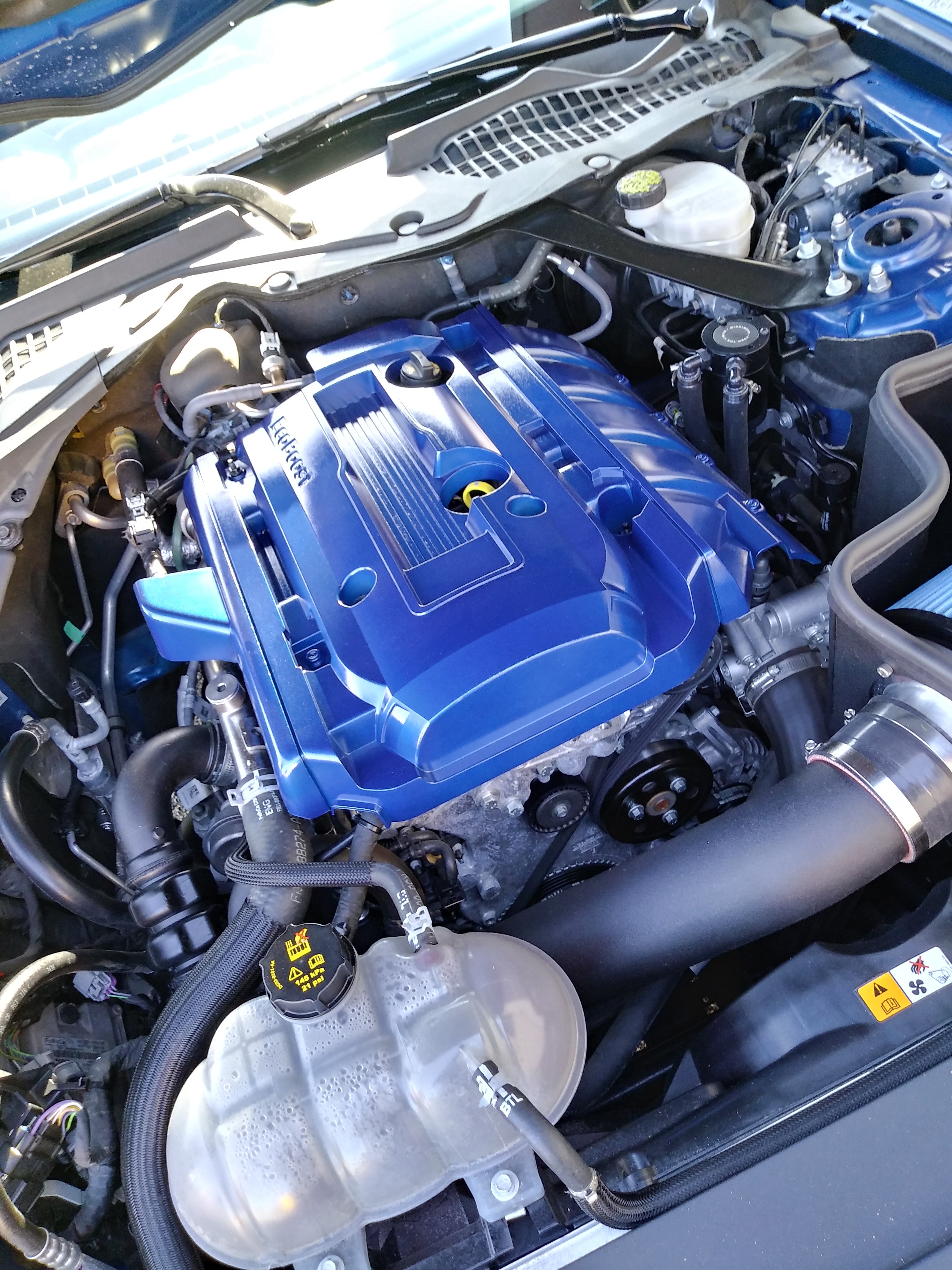2017 Mustang Ecoboost - Keeping It Cool

Although the idea of a 4 cylinder, turbocharged Mustang has been a point of contention among muscle car enthusiasts since its initial launch in the 80s, the timing is perfect for a revisit of this platform, given the rising fuel prices and growing concern of automobile emissions on the environment. The Ecoboost offers a radically different driving experience than its 5.0 counterpart, geared more towards the tuner crowd than the muscle car purist, and gives the Mustang a one-size-fits-all appeal. We recently had the chance to strap an Ecoboost to our dyno and took note of some interesting results.
When the car came into our shop, it was bone stock and fresh from the factory. We installed a Borla ATAK axle-back exhaust and nothing else. This, we thought, would be the perfect time to put the car on the dyno and see what kind of power it would make in the real world. As expected, the car made approximately 250 rwhp through an automatic transmission. When you consider the advertised 310 crankshaft horsepower and factor the drivetrain loss through the automatic gearbox, this figure is right on the money. Then we did a second pull on the dyno, followed by two more, and this is where it got interesting. This little 2.3L powerplant was getting tired. From one pull to the next, we saw a loss of 26rwhp. So where did all those ponies run off to? Simple, they were consumed by heat. The turbocharger that allowed this small displacement mill to produce its impressive power was also responsible for generating the heat that robbed it of that power. This is where the fun began.

We put the car up on the hoist and began the modifications. We added a Turbosmart blow off valve, a Steeda cold air intake, Mishimoto catch can and heat exchanger, and a 3” down pipe, and dyno tuned it using HP Tuners software and an nGauge tuner. Some of these parts were customer requested and some, such as the heat exchanger, were suggested by us after the initial dyno runs. Aside from the cold air intake, none of these parts are real power adders and were chosen to mitigate the heat soak issues we were having with the car after consecutive dyno pulls. We took the car off the hoist, strapped it back up to the dyno and began tuning. Once that was done, it was time for further testing.

We noticed right away there was a staggering difference in performance. With everything we had added to the car, after it was tuned, it made 300 rwhp on the first pull. We then ran the car for 3 more pulls, all at 300 rwhp. The little 2.3 wasn’t huffing and puffing anymore and turned into the little engine that could. And boy could it ever! Pull after pull we saw consistent power within 1-2 hp of the 300 rwhp we initially got after the modifications. And that’s the key here, consistency. It doesn’t matter whether it’s a street/strip car, track car, or drag car, delivering consistent and reliable power to the wheels is always in your best interest. As an added bonus to the power, keeping temperatures down means less wear and tear on moving parts and fewer repair bill.
With the right supporting mods, the Ecoboost Mustang is a serious competitor in the sports car market. Don’t let the absence of 4 cylinders in a traditional V8 platform fool you, a lot of fun can be had behind the wheel of Ford’s peppy 4 banger.



Mat Cote
Author